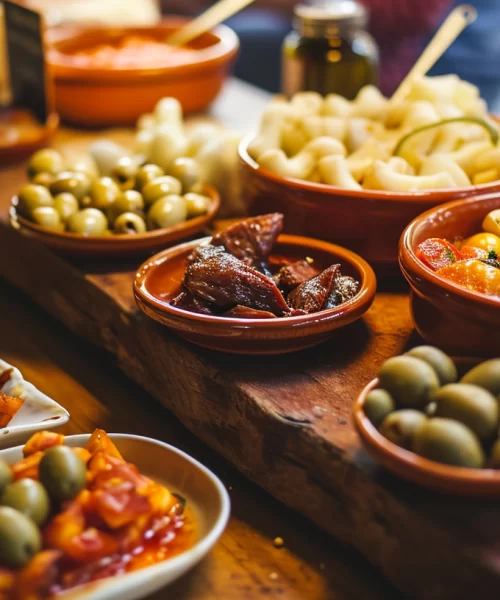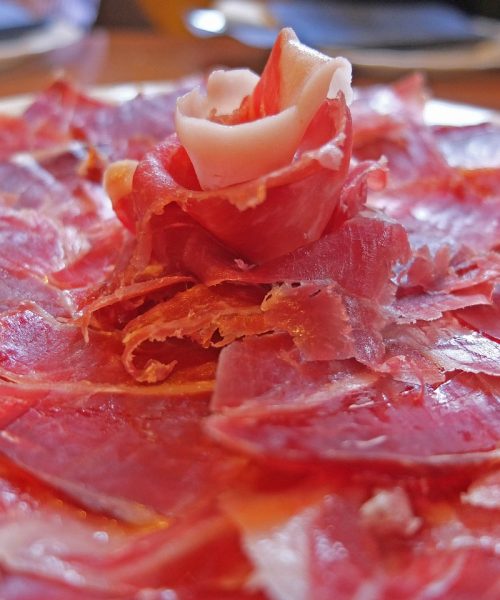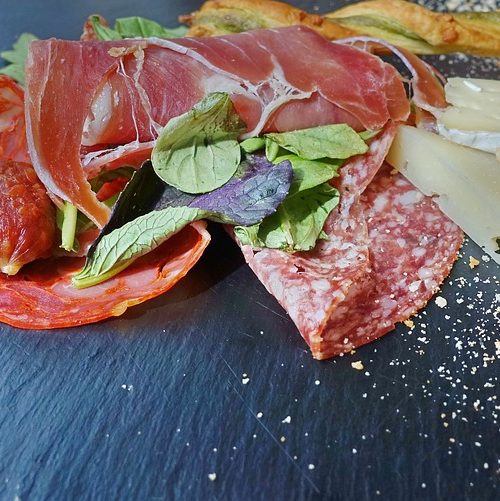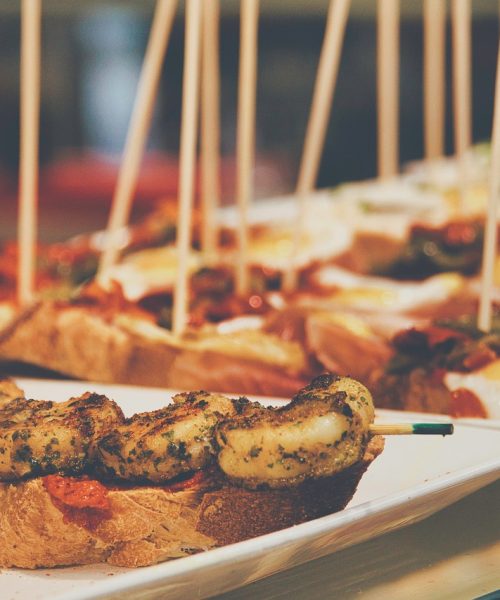Chorizo is a typical Spanish dish, very tasty and also popular in many other countries. As a tapa with potatoes and eggs or as an indispensable ingredient in numerous recipes such as stews and casseroles, this sausage gives its characteristic flavor and sometimes a savory note.
In this article you will find interesting information about chorizo, such as it is made, the most common varieties and some interesting facts about this Spanish sausage par excellence.
What is chorizo?
Chorizo is a fresh or cured sausage made from minced pork and bacon (it can also be made from beef and even venison), seasoned with sweet and hot paprika and other ingredients such as pepper and garlic is soaked. The deep red color of chorizo is due to the use of La Vera paprika, which also gives it its characteristic smoky flavor.
How is chorizo made?
In Spain you could say that every town or even every family has its own recipe for chorizo, as it was and is a tradition in many families to make the sausages themselves for the “Matanza”.
Each of these recipes uses a different spice blend, with the most commonly used spices being paprika, garlic, pepper, cumin, caraway, bay leaf, thyme and oregano.
In general, all chorizos prepared according to these steps:
- mince the meat and bacon.
- Mixing and kneading the meat with the spices.
- The mixture is stuffed into a natural pig intestine. Occasionally, this covering may also be made of plastic.
- Curing of the pieces, which are tied up and exposed to air in natural drying halls with suitable cold and humidity conditions .
- The maturation of the pieces lasts about 50 days. Sometimes the chorizos are smoked over oak or holm oak at this stage.
Types of Spanish Chorizo
Spanish chorizos are classified according to both their degree of ripeness and their ingredients, but they always contain paprika, which gives Spanish chorizos their bright red colour. There are the following types of Spanish chorizo:
Iberian chorizo
This chorizo is made from made from Iberian pork. It has a more intense flavor than that prepared with white pork. It is usually made in the same regions where Iberian ham is produced, such as B. in Extremadura, Jabugo, Los Pedroches and Guijuelo. It is produced in different formats, but the predominant formats are the Cular chorizo, which is the thickest, and the Vela chorizo, which has an intermediate thickness between the Cular chorizo and the traditional chorizo.
Chorizo riojano
Chorizo riojano is one of the typical foods of La Rioja gastronomy. Made with white pork, it has a balanced and intense taste, where the aroma of Paprika de la Vera and garlic predominates. It is one of the few chorizo sausages with the PGI seal of approval.
Chorizo de León
Chorizo de León is known for being smoked and having a generally spicy flavor. It is made in the shape of a horseshoe. Along with the Cecina de Leon, the Chorizo de Leon is one of the most famous products of Leonese gastronomy.
Chorizo from Navarre
The Chorizo de Pamplona was one of the first industrially produced sausages in Spain. It is made from finely chopped pork, beef and bacon. Despite its name, it is a chorizo sausage that is eaten almost everywhere in Spain. It is usually used for the preparation of sandwiches that are thinly sliced.
Chorizo as an ingredient in Spanish cuisine
Chorizo is an essential part of traditional Spanish gastronomy and is used in numerous typical recipes of many regions. Here are some typical Spanish dishes that contain chorizo:
-
-
- Huevos a la extremeña
- Rioja-style potatoes with chorizo
- Asturian fabada
- Lentils with chorizo
- Madrilenian stew
- Migas with chorizo
- Chickpeas with chorizo
-
Chorizo as a tapa
In addition to elaborate dishes and stews, chorizo is also available as a tapa found in almost every Spanish bar. Some of the most famous tapas with chorizo are:
-
-
-
- Chorizo in wine
- Chorizo in cider
- Tortilla with chorizo
- Chorizo Sandwich
- Chorizo on a Charcuterie Board
- Scrambled eggs with chorizo
-
-
Differences between chorizo and Chistorra
Chorizo and Chistorra are very similar in color and taste, but have some differences.
In appearance, chorizo is thicker because it is in is usually made from pig intestines, while chistorra is much thinner and is made from lamb intestines.
The main difference between chorizo and chistorra lies in the ripening period: while chorizo is fully ripened, chistorra is a semi-cured sausage, which has only matured for a few days and must therefore be cooked before it is eaten.
Where can you buy chorizo?
In our specialist shop t for gourmet Spanish cured meats you can buy different types of chorizo. You will find Iberian chorizo sausages in slices or in chorizo vela, packs of serrano sausages with chorizo, ham, salchichón and loin, as well as Iberian chorizo jabuguitos de bellota, ideal to use as an ingredient to enhance all kinds of recipes.





